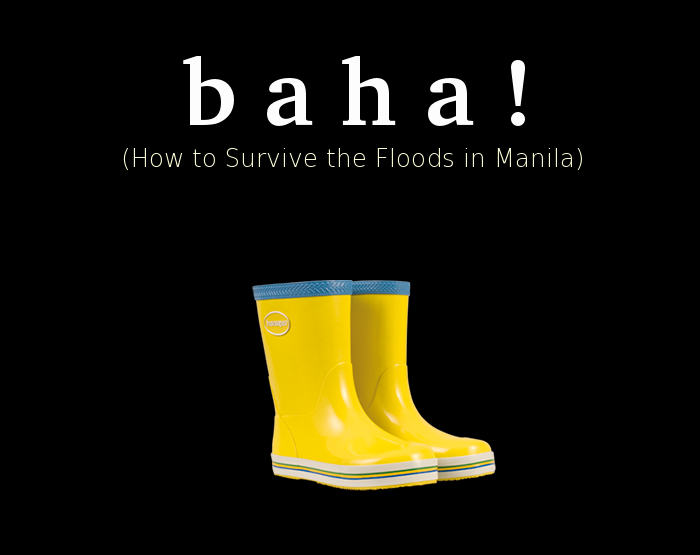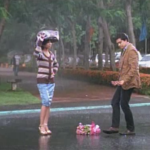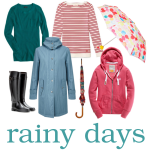
Eew Baha! How to Survive the Floods in Manila
It’s the season of sweaters, cuddling, staying in, colorful umbrellas and most of all, flooding. It’s time to bring out the rain boots because we’re in for another dose of heavy rainfall and clogged streets.
A colder weather means, we no longer have to deal with unbearable heat, but it also means more pairs of shoes will be ruined and more streets will be flooded come rainy days. I’m not sure what MMDA is thinking about their plans of building a subway system in the metro. Shouldn’t they be finding ways to prevent the flooding around Manila first before anything else?
While MMDA struggles to solve this crippling dilemma, we can cope and adapt and at least try not to drown. As someone who has lived in an easily-flooded area in Makati, there are some lessons I learned the difficult and messy way.
1. Always check weather and flood updates
As working individuals, we know that harsh weather conditions can’t always stop us from going to the office. Unlike students, sometimes we have to pretend that we’re waterproof. However, it’s still our duty to make sure that our route to work is safe and accessible. It’s pointless to travel for an hour if only to get stuck for half a day due to flooding.
You can depend on TV reports for live updates, and there’s always Twitter where netizens make it a point to update their timeline about flooding in their areas.
2. Prepare your rainy day battle gear
If staying in is not an option, then having your rainy day outfit is a must. Invest on a pair of rain boots that can help you navigate flooded streets and avoid contracting diseases such as leptospirosis and hepatitis A. Buy a rain coat if you have to. Just try to stay as dry as possible until you reach your workplace. It’s also best to have a pair of waterproof sneakers or a pair of flipflops in the office. You’ll never know when the heavy rains will occur. Metro Manila doesn’t need a typhoon for its streets to get flooded.
When worse comes to worse, there are dryer alternatives such as riding the makeshift boats or pedicab available around Manila during flooded days.
3. Stack on the noodles and other emergency food
Instant noodles is bad for your health, but they’re quick to prepare and really delicious, too. (I swear I’m not a pancit canton advocate!) And for someone who can’t cook and who lives away from home, sometimes it’s the only resort to survive the flood. There are many alternatives, of course, just make sure that they can last for days. Make sure you always have crackers and water to combat the hungry hours ahead. Some of the worst floods in the metro span for almost three days, so having something at home you can easily prepare and preserve is necessary.
4. Keep a stash of movies and books ready for consumption
Being stuck at home can be great since you actually have an excuse not to go to the office. But it can be pretty boring, too. Save yourself from boredom and always have books and movies for rainy days. Maybe it’s time for you to finally get some reading done. You can even start marathoning an entire season of that American series everyone’s talking about. Of course, this can only be made possible if the electricity won’t go out.
5. Always have an alternative route going home
The floods usually come at the most unfortunate time—dismissal. Catching a ride home can be hellish for commuters. Though your area may not be flooded, the route your bus takes might be. That’s why it’s essential to know different routes you can take to reach home. Unless you know someone who can pick you up or can give you a ride, being knowledgeable about the routes of buses and jeepneys can help you survive. The same goes for those who drive. Knowing the in’s and out’s around the metro is your lifesaver in such situations.
6. Brace yourself for the possibility of swimming in the flood
Some people are lucky never to experience taking the awful plunge, while some, not so much. If it’s okay to wait for hours till the water subsides, then you can avoid this. But going home as early as possible is the priority, sometimes you just have to bear with it. It’s not an ideal way to end the day, and most definitely not safe. But as long you take a proper bath right after (about 40 hours if possible) and sanitize everything that touched flood water, there’s nothing to worry about. Just try to feel icky for the rest of your life. It’s the stuff nightmares are made of.
7. Jot down the local hotlines
Be knowledgeable on who should be contacted during emergencies and inquiries. Jot them on paper and keep them on your phones. You’ll never know when your batteries will run out or when you’ll lose signal. This can come in handy during a crisis situation. It’ll be problematic if you encounter a problem and need help but you have no idea who to call.
8. Know when it’s time to evacuate
Though staying at home is ideal when the heavy rains start, it’s best to watch out for warning signals. When experts are advising residents to evacuate to higher grounds, it’s best to listen. Don’t wait for the water to rise to realize that it’s time to leave. The best time to evacuate is when the roads are still accessible.
Metro Manila is lucky that we don’t have too worry too much about flash floods, but it’s still proper to be alert. Constant vigilance, dear friends.
Can you share other survival tips during this season? Do you have crazy stories involving floods in the metro? Comment below!
More From Our Site
Jane Galvez is a ditzy daydreamer and wannabe writer from Makati. She enjoys good sci-fi and cheesy YA. You can read more of her musings on Oh My Janey. She’s also a self-professed fangirl. She rants over here.










Pingback: Rainy Season is Only Fun When We Were Kids | Millennials in Manila
Pingback: Legit Reasons Why the Rainy Season Rocks | Millennials in Manila